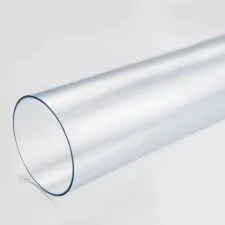Nov . 06, 2024 00:13 Back to list
2-inch HDPE Pipe for Durable Water Supply and Irrigation Applications
Understanding 2 Inch HDPE Pipe Applications and Benefits
High-Density Polyethylene (HDPE) pipes have become a popular choice in various industries due to their durability, flexibility, and resistance to chemicals. The 2-inch HDPE pipe, in particular, is a standard dimension that offers numerous advantages across a range of applications from agriculture to construction.
What is HDPE?
High-Density Polyethylene is a thermoplastic polymer made from petroleum. Known for its high strength-to-density ratio, HDPE is versatile and is used in the production of many types of products, including pipes. The properties of HDPE make it an ideal material for piping systems, especially for applications requiring high resistance to stress and environmental factors.
Features of 2-Inch HDPE Pipe
The 2-inch diameter of HDPE pipes is suitable for a variety of applications. One of the key features of HDPE pipes is their flexibility. Unlike traditional metal pipes, HDPE can bend without breaking, allowing for easier installation in various terrains. Moreover, a 2-inch HDPE pipe is lightweight, making it easier to transport and install compared to other piping materials like steel or concrete.
Another salient feature is the corrosion resistance of HDPE. It does not rust or corrode, which significantly prolongs its lifespan. Additionally, HDPE pipes exhibit excellent resistance to a wide range of chemicals, ensuring their integrity even when transporting hazardous substances. This makes them a preferred choice in industries such as chemicals and wastewater management.
Applications of 2-Inch HDPE Pipe
The versatility of 2-inch HDPE pipes allows them to be utilized in several applications. In agriculture, they are commonly used for irrigation systems, given their ability to handle water pressure efficiently. Farmers appreciate the lightweight and flexible nature of these pipes, which enable easy installation and maintenance.
2 inch hdpe pipe

In urban settings, 2-inch HDPE pipes are widely used for water supply and distribution systems. Their resistance to scale and corrosion ensures clean and safe drinking water delivery. Additionally, municipalities often turn to HDPE for stormwater and drainage systems, as the pipe's design allows it to handle large volumes of water without risk of blockage.
Construction sites also benefit from the use of 2-inch HDPE pipes. These pipes can be found in underground utility installations, where their resistance to harsh environmental conditions and physical impact is crucial. Furthermore, they play a role in geothermal applications, where they are used to transport fluids to and from heating and cooling systems.
Benefits of Using 2-Inch HDPE Pipe
There are several benefits associated with the use of 2-inch HDPE pipes. Firstly, their longevity means reduced maintenance costs over time. Unlike metal pipes that may require frequent repairs or replacements, HDPE pipes can last for decades with minimal wear.
Secondly, the ease of installation reduces labor costs and project timelines. HDPE pipes can be welded together seamlessly, creating a strong and leak-proof joint that requires less fitting compared to traditional piping systems.
Finally, the environmental impact of HDPE pipes is worth mentioning. They are recyclable and contribute to sustainable practices within many industries. By choosing HDPE, businesses can align themselves with green initiatives, thereby enhancing their corporate responsibility image.
Conclusion
In summary, the 2-inch HDPE pipe is a robust choice for various applications, ranging from agriculture to urban infrastructure. Its features of flexibility, durability, and resistance to corrosion make it an outstanding material in the piping industry. With the growing demand for reliable and efficient piping solutions, 2-inch HDPE pipes play a pivotal role in modern construction and industrial projects, paving the way for future advancements in piping technology.
-
High-Quality PPR Pipes and Fittings Durable ERA PPR & PVC PPR Solutions
NewsJul.08,2025
-
Black HDPE Cutting Board - Durable, Non-Porous & Food Safe HDPE Plastic Cutting Board
NewsJul.08,2025
-
High-Quality CPVC Panel Durable HDPE & PVC Panels Supplier
NewsJul.08,2025
-
Double PE Welding Rod Supplier - High Strength, Durable & Versatile Welding Solutions
NewsJul.07,2025
-
High-Quality PVC-O Pipe Supplier Durable 75mm PVC Pipe & Connections Leading PVC Pipe Company
NewsJul.07,2025
-
HDPE Drainage Pipe Supplier – Durable & Corrosion-Resistant Solutions
NewsJul.06,2025

